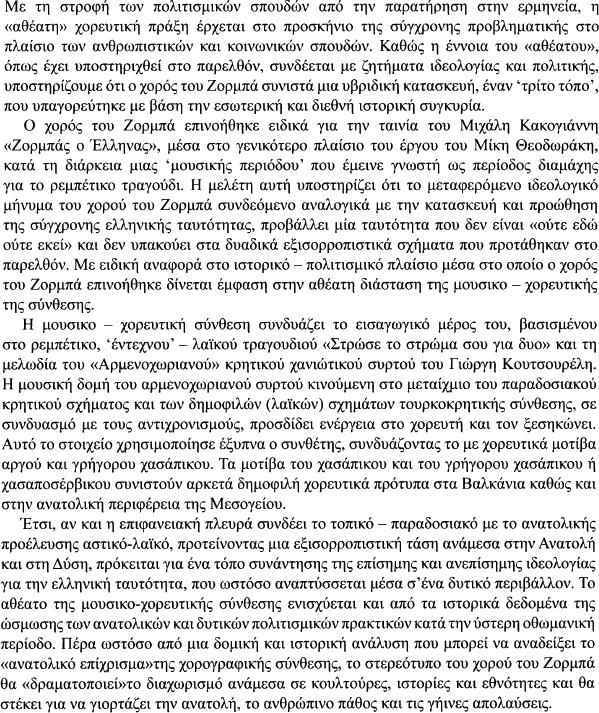No CrossRef data available.
Article contents
The “Invisible” Dimension of Zorba's Dance
Published online by Cambridge University Press: 07 March 2019
Extract
The methodological shift in cultural studies from observation to meaning (Geertz 1973) resulted in “invisible” dance action coming to the forefront of contemporary speculation in the humanistic and social sciences (Farnell 2001b:2). As Adrienne Kaeppler observes, it cannot be considered adequate to pinpoint whatever message we receive from the visually perceived manifestation of any choreography, because this visible dimension constitutes only one component of a larger social action. In order to develop an opinion of what and how a dance communicates in a specific circumstance, we must comprehend it as a holistic entity. According to Kaeppler, the creative process of understanding dance can be interpreted in a more obvious way: from within the dancer's ability and the spectator's knowledge of the metaphor applied in the dance motion, in light of the more general social and cultural environment. Following this argument, that the “visible” and “invisible” may emerge in all their dimensions (Kaeppler 2001:31–39), dance cannot be perceived solely as form; it has a usage and an orbit that emphasize the “human” and the “social,” while most of the time concealing its invisible and loaded symbolic aspects.


- Type
- Articles
- Information
- Copyright
- Copyright © 2007 by the International Council for Traditional Music




